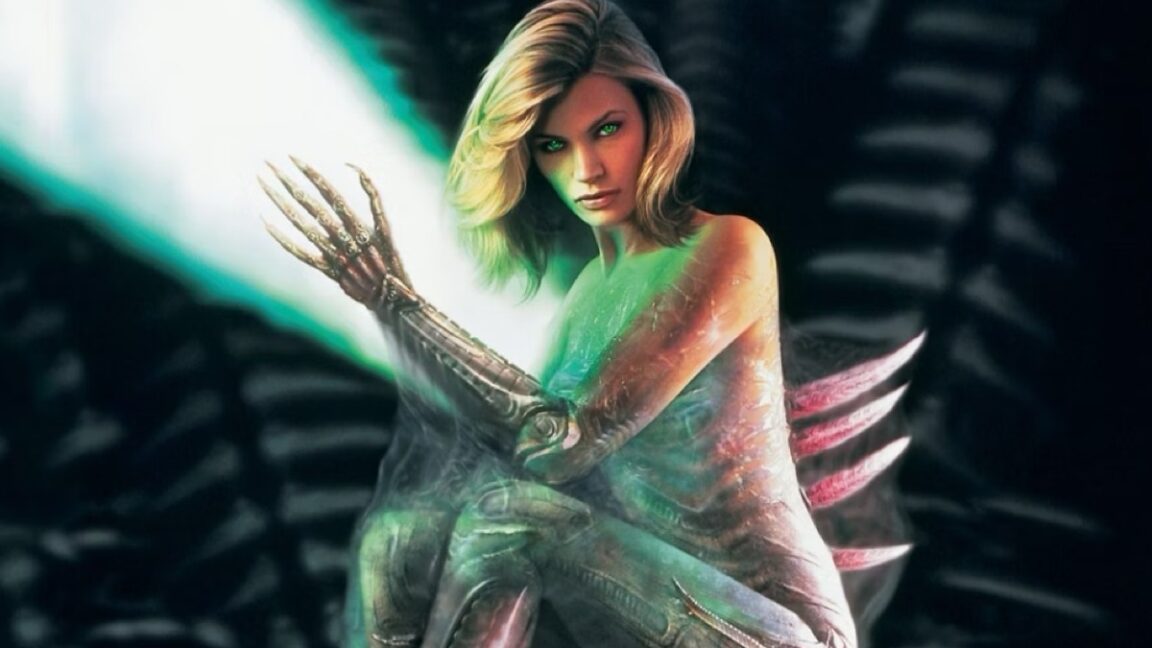Technology
Celebrating 30 Years of Species: A Sci-Fi Cult Classic Revisited

Earlier this month, Hollywood reflected on the legacy of actor Michael Madsen, known for his roles in films like Reservoir Dogs and Kill Bill. As tributes poured in, one lesser-known role of his emerged from the shadows: a black ops mercenary in the 1995 sci-fi thriller Species. This year marks the film’s 30th anniversary, and while it received mixed reviews at the time, it has maintained a cult status as an entertaining, if campy, monster movie.
The screenplay for Species was crafted by Dennis Feldman, who drew inspiration from an article by renowned science fiction writer Arthur C. Clarke. Feldman’s concept revolved around the idea that extraterrestrial contact could come not through physical visitation but via information. This led him to consider the potential dangers of sending signals into space, suggesting they might attract unwanted attention from hostile entities. In his narrative, a response to Earth’s transmissions provides instructions for creating a hybrid lifeform using alien DNA.
The plot centers around the U.S. government’s experiment to create a human-alien hybrid. Dr. Xavier Fitch, portrayed by Ben Kingsley, oversees the project, which produces a young girl named Sil, played initially by Michelle Williams. As Sil rapidly matures, her psychological stability deteriorates, prompting Fitch to terminate the experiment. In a moment of betrayal, Sil escapes, setting off a thrilling chase across Los Angeles.
Chasing the Hybrid: A Deadly Game
Fitch assembles a team to hunt down Sil, featuring Madsen as the mercenary Preston Lennox, molecular biologist Dr. Laura Baker (Marg Helgenberger), anthropologist Dr. Stephen Arden (Alfred Molina), and empath Dan Smithson (Forest Whitaker). Their mission becomes increasingly complicated as Sil evolves, transforming mid-journey into a fully grown woman, played by Natasha Henstridge. This transformation leads to a series of violent encounters, as Sil navigates her new identity and instincts.
As Sil escapes her captors, the film explores themes of survival and the consequences of scientific hubris. The chase through the city culminates in a tense showdown in the sewers, where Sil gives birth to a hybrid son. The film’s gruesome moments, particularly the violent deaths of her victims, contrast sharply with the earlier, more sympathetic portrayal of young Sil.
The visual elements of Species are notably influenced by the work of artist H.R. Giger, who aimed to design a creature that was both beautiful and deadly. Although Giger expressed disappointment with the final product, feeling it echoed his designs for the Alien series, his vision contributed significantly to the film’s aesthetic. The striking imagery and unsettling atmosphere have helped the film endure in popular culture.
A Cult Classic with Flaws
Despite its shortcomings, Species has garnered a dedicated following. Critics have pointed to its uninspired dialogue and underdeveloped characters, yet the performances of Madsen and Helgenberger stand out, offering moments of genuine chemistry. Their interactions provide a stark contrast to Sil’s predatory nature, making the film’s exploration of human relationships all the more intriguing.
The film’s pacing keeps audiences engaged, and its blend of horror and science fiction has allowed it to maintain relevance over three decades. Although it may never reach the heights of Alien, Species successfully combines elements of suspense and intrigue, making it an enjoyable guilty pleasure for fans of the genre.
With its commercial success, Species spawned several sequels, although none could replicate the original’s unique combination of themes and thrills. The film’s legacy continues to influence discussions around the ethics of genetic science and the portrayal of female characters in science fiction.
As the 30th anniversary of Species arrives, it serves as a reminder of the film’s impact on the genre and its ability to captivate audiences with a blend of horror, science fiction, and complex moral questions.
-

 Politics4 weeks ago
Politics4 weeks agoSecwepemc First Nation Seeks Aboriginal Title Over Kamloops Area
-

 World5 months ago
World5 months agoScientists Unearth Ancient Antarctic Ice to Unlock Climate Secrets
-

 Entertainment5 months ago
Entertainment5 months agoTrump and McCormick to Announce $70 Billion Energy Investments
-

 Science5 months ago
Science5 months agoFour Astronauts Return to Earth After International Space Station Mission
-

 Lifestyle5 months ago
Lifestyle5 months agoTransLink Launches Food Truck Program to Boost Revenue in Vancouver
-

 Technology3 months ago
Technology3 months agoApple Notes Enhances Functionality with Markdown Support in macOS 26
-

 Lifestyle3 months ago
Lifestyle3 months agoManitoba’s Burger Champion Shines Again Amid Dining Innovations
-

 Top Stories2 months ago
Top Stories2 months agoUrgent Update: Fatal Crash on Highway 99 Claims Life of Pitt Meadows Man
-

 Politics4 months ago
Politics4 months agoUkrainian Tennis Star Elina Svitolina Faces Death Threats Online
-

 Sports5 months ago
Sports5 months agoSearch Underway for Missing Hunter Amid Hokkaido Bear Emergency
-

 Politics5 months ago
Politics5 months agoCarney Engages First Nations Leaders at Development Law Summit
-

 Technology5 months ago
Technology5 months agoFrosthaven Launches Early Access on July 31, 2025





















